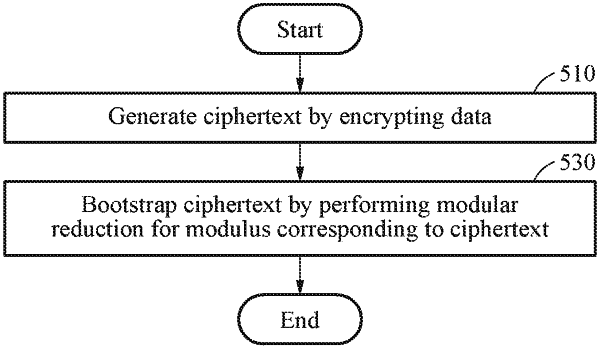| CPC H04L 9/008 (2013.01) [H04L 2209/12 (2013.01)] | 21 Claims |

|
1. A processor-implemented encryption method using homomorphic encryption, the encryption method comprising:
encrypting plain text data into a first ciphertext;
performing a first homomorphic operation on the first ciphertext to generate a second ciphertext, the second ciphertext comprises a coefficient that is higher than coefficient of the first ciphertext due to noise introduced during the first homomorphic operation;
generating a target polynomial based on the increased coefficient, the target polynomial corresponds to a modular reduction, comprising:
iteratively determining one or more reference points based on a predetermined degree of the target polynomial;
determining a predetermined polynomial that passes through the one or more reference points where absolute values of error between the predetermined polynomial and a determined piecewise continuous function at the one or more reference points alternate in sign;
selecting one or more target points from the predetermined polynomial and the determined piecewise continuous function such that the one or more target points alternate in sign; and
generating the target polynomial based on absolute values of error of the one or more target points being within a predefined range corresponding to the increased coefficient; and
generating a third ciphertext based on the target polynomial where the target polynomial reduces the increased coefficient within the predefined range to enable additional homomorphic operation, by performing a second homomorphic operation on the second ciphertext.
|